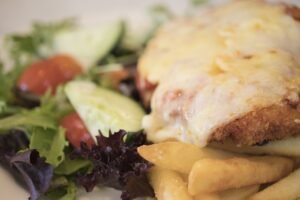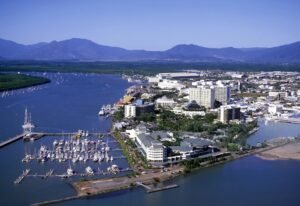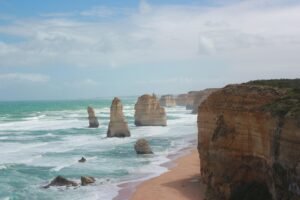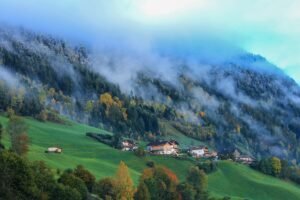10 culture wonders travel in Australia discover the top picks
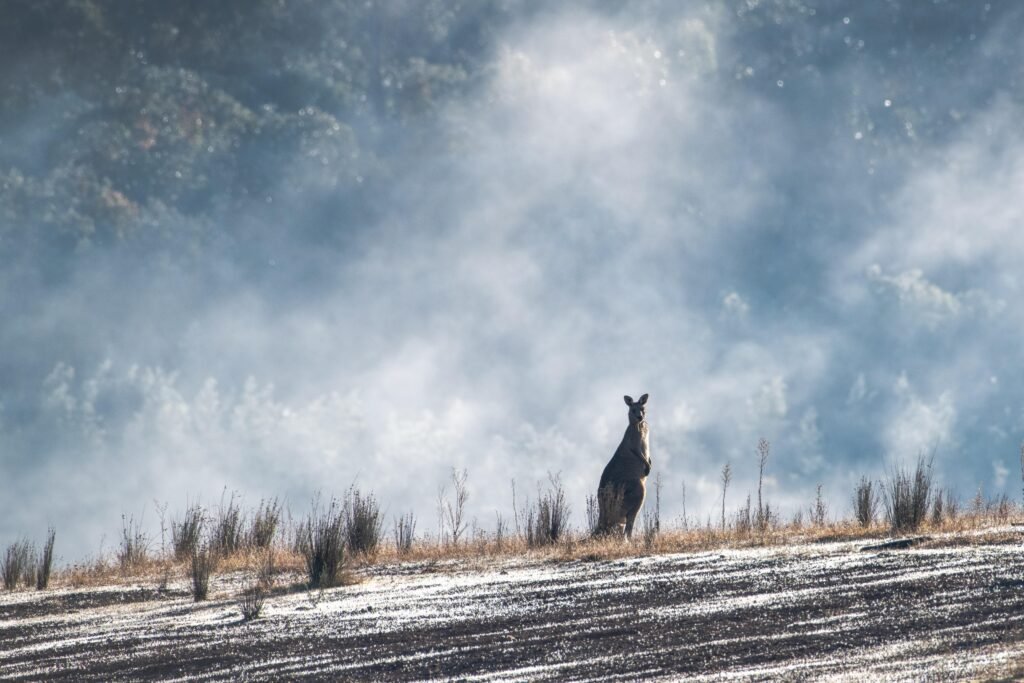
Australia is the most beautiful place on earth, but it also has beautiful cultural wonders depicting its history, creativity, and diversity. Indian cultures and rich heritage can also be seen in Australia’s dramatic bush scenery and stunning coastal landscapes-from ancient Indigenous traditions to the latest modern art, those cultural landmarks give one an extraordinary glimpse into the heart and soul of the nation.
#Sydney Opera House:
Australia Sydney Opera House, the iconic architectural masterpiece, is a non-stop attraction. It is one of the most famous landmarks in Australia. Today, we will explore what makes the Sydney Opera House unique—its history, design, and cultural significance.
Located in New South Wales, Australia, the Sydney Opera House is situated at Bennelong Point, overlooking the stunning Sydney Harbour. Designed by Danish architect Jørn Utzon, this architectural marvel took years of planning and execution. The Opera House is not only a theater but also a cultural symbol of Sydney, celebrated worldwide.
The Sydney Opera House officially opened in 1973 and has hosted countless iconic performances. Queen Elizabeth II herself was present for the grand opening. The design of the Opera House was revolutionary, featuring unique sail-like structures that have become synonymous with Sydney’s skyline.
This landmark required over 10,000 workers to complete its construction. It is built with over 1 million ceramic tiles on its roof, sourced from Sweden, and is supported by massive concrete beams. Spanning over 185 meters, the Opera House is a feat of engineering, attracting millions of visitors annually.
The Opera House has multiple performance venues, including the Concert Hall, Opera Theatre, Drama Theatre, Playhouse, and a Forecourt for outdoor performances. It also includes recording studios, rehearsal spaces, and a restaurant, making it a versatile hub for art and culture.
Annually, the Sydney Opera House hosts over 1,500 performances, ranging from opera and ballet to theater and music concerts. It has become a global tourist destination, welcoming visitors from around the world to experience its architectural beauty and vibrant cultural events.
In 2007, the Sydney Opera House was declared a UNESCO World Heritage Site for its outstanding universal value. This iconic building stands as a testament to human creativity and innovation.
#Parliament House:
Now, this building, with its magnificent flagpole, was opened on this site by the Queen in 1988. The Prime Minister of the day was Bob Hawke. The idea to create this building and to move from the old Parliament, which is just down the hill in front of me, was initiated by Malcolm Fraser because the old building had simply become too small.
Parliament had originally sat in Melbourne from 1901 before being moved to Canberra in 1927 into what was always intended to be a temporary building. Then, in 1988, we ended up with this magnificent building as our new Parliament House.
The architect, an Italian from New York who won an international prize to design this building, created something beyond what we could have imagined. While many thought the building would sit grandly on the hill with the flagpole as its peak, he cleverly cut the hill away and built the structure into it. This design allows us to walk over the top of the building, in effect walking over our politicians, while still preserving the grandeur of the flagpole, which stands as a central landmark of the city.
An amazing design, it has truly stood the test of time in terms of its functionality as our Parliament House. It’s well worth a visit for anyone coming to Canberra. It’s fascinating for Australians and for international visitors who want to learn more about Australia’s democracy.
#Melbourne’s Laneways:
Melbourne is known worldwide for its thriving laneway scene. Originally dingy service lanes, these were revitalized back in the 1980s and have since become home to restaurants, hidden bars, and colorful street art. My name is Taylor, and today I’ll give you an insider’s look at the five best laneways in Melbourne. Let’s jump straight into it.
By far, the most popular laneway for tourists in Melbourne is Hosier Lane, located just down from Flinders Street Station. This laneway is covered in street art. While street art in Melbourne isn’t technically legal, it’s not illegal either. The council allows it if they believe it enriches the urban culture. My favorite piece of art in Hosier Lane overlooks the entire laneway. If you look up, you’ll see a portrait of a young Indigenous boy by local artist Matt Adnate.
During the early 2000s, several laneways underwent renaming. This one was the first. Formerly called Corporation Lane, it was renamed AC/DC Lane after Australia’s greatest rock and roll band. In 1976, AC/DC famously shot the film clip for their single It’s a Long Way to the Top on the back of a flatbed truck driving down Swanston Street.
Center Place was the beginning of Melbourne’s laneway revitalization. It was one of the first laneways to be transformed by the local council back in the 1980s. It’s a magical strip that feels a bit like something out of Harry Potter. Now it’s filled with cafes, the odd bar, and is a popular destination for locals on their lunch break. Melbourne has the strongest cafe culture of any city in Australia, and this laneway is a great example.
National Gallery of Australia:
In 1968, the federal government ran a design competition to find an architect worthy of designing the National Gallery of Australia. The competition was won by the Sydney firm Edwards, Madigan, Torzillo, and Partners.
Initial designs had the gallery built up on Capitol Hill, but Parliament House was going to be built there instead, so they moved it down to the foreshore of Lake Burley Griffin in the northeastern part of the parliamentary triangle.
Construction began in 1973, and to mark the occasion, Gough Whitlam unveiled this plaque right here. The building cost 83 million dollars and was officially opened by Her Majesty Queen Elizabeth II on the 12th of October, 1982—one year after construction was completed.
The building is influenced by late 20th-century brutalist architecture and is mostly comprised of bush-hammered concrete, as architect Madigan believed that concrete has as much integrity as stone. Triangles are featured throughout the building, including the flooring, staircases, and columns, among other features.
Extensions were added to the National Gallery of Australia in 1997 and 2006. The gallery has a floor space of approximately 20,500 square meters, with only 7,000 square meters being used for exhibition space. The rest is dedicated to staff, storage, and facilities used for education, scholarly, and public relations functions.
As of 2018, the national art collection is valued at 5.9 billion dollars, with 927,731 people visiting that year alone. The gallery exhibits art from around the world and Australia, including Indigenous art, modern and Eastern arts, as well as photography.
Outside of the gallery is the sculpture garden and James Turrell’s Skyspace: Within Without, which was installed in 2010. Once you finish browsing the artworks, you can sit down for a coffee at one of the cafes or pick up a souvenir or two at the shop.
If you’d like to visit the National Gallery of Australia, it is open every day except Christmas Day between 10 a.m. and 5 p.m. Entry is free.
#MONA (Museum of Old and New Art):
The Museum of Old and New Art is just 21 minutes by car from Hobart CBD, or you can take the more relaxed way on the Mona Roma ferry—just a 20-minute cruise up the River Derwent. You can choose from two different travel options: purchase a standard ticket for $23, with access to the onboard bars, or upgrade to the Posh Pit and escape the riff raff.
Now, if you’re going to take the ferry, you might as well go in style. We chose the Posh Pit at a surprisingly affordable $58 return trip, including beer, wine, and canapés.
Just over 20 minutes in total. A bit of a slow start as we’ve got some divers under the bridge, so we need to be careful of them, and then we’ll get up to our rapidly fast flying speed.
“Ladies and gents, we have life jackets on this boat stored upstairs and downstairs. Very unlikely that we’ll need them today. A good-looking crew will hand those out for you and issue further instructions. Something like, ‘Here, please put this on.’ Take care moving around the boat today and use the handrails provided on those stairs. Also, take care through the doorways.”
The MR1, built by INCAT Tasmania and designed by Chamberlain Marine, was launched in March 2013.
At 33.7 metres in length, its unusual lines and distinctive features—complete with a full camouflage-style paint job—don’t go unnoticed on the river. With three separate bars, including the VIP lounge, extra-high ceilings, large windows that frame the scenery along the banks of the Derwent, and a number of art installations, it really is a must-see.
The Tasman Bridge, opened to traffic in August 1964, is a four-lane, high-level concrete bridge constructed with a central navigation span for shipping.
he Bowen Bridge, built with federal government funds following the collapse of the Tasman Bridge in 1975, cost $49 million to construct and was officially opened on the 23rd of February, 1984.
The MONA building is carved into the Triassic sandstone cliffs of the Berriedale Peninsula. The museum is a three-level subterranean structure that lies 12 metres below the sandstone rock face on the banks of the Derwent River.
The heritage-listed buildings on the site have been incorporated into the new MONA museum. The Roundhouse has been turned into a museum library, while the Roy Grounds House has been transformed into the entrance for the underground museum.
The museum, located on the grounds of Moorilla Estate Vineyards, 12 kilometres north of Hobart City, was created by renovating the original Moorilla Museum of Antiques, which was founded in March 2002 and closed in May 2006. The $75 million renovation project started in 2007 and was completed in 2010.
MONA is the largest private museum in Australia, owned by art collector and entrepreneur David Walsh. It houses modern art and antiques from all over the world. The building covers an area of 9,500 square metres on a 3.5-hectare site. The new museum opened to the public in January 2011.
#Sovereign Hill:
Welcome to Sovereign Hill. Today, we’re going to step back in time to the 1850s and discuss Sovereign Hill and do a full day at Sovereign Hill. Start your adventure at the Red Hill Gully Diggings, where you can pan for real gold — and its finders keepers! Watch our confectioners use original equipment and processes to make traditional boiled lollies, and they may even let you have a taste. Travel underground, deep below Sovereign Hill, on one of our fully guided mine tours. For lunch, we have plenty of options to satisfy all tastes.
including the Hope Bakery, which sells award-winning pies and sausage rolls. Don’t miss the Redcoat soldiers as they march through the town to the parade grounds, where they drill, fire their muskets, and, if you’re lucky, pose for a photo. Our lost trade demonstrations will transport you back to the busy goldfields. You can watch our tradesmen at work or even join in. Take a coach ride around the museum and then wander down Main Street, shopping at the businesses that once existed on the goldfields.
Dress up in period costume for a fun souvenir photo. Once the museum has closed, head back to the Sovereign Hill Hotel to get ready for dinner and our Sound and Light Show Spectacular. All right, there is a lot more to see and do at Sovereign Hill, which is why your ticket is valid for two days. Start planning your adventure today!
#Australian War Memorial:
The Australian National War Memorial is an amazing museum. It’s also an incredible place of remembrance. It serves these two different purposes: as a museum and as a memorial. Canberra Guided Tours offers wonderful tours around the Canberra region, and almost all of them include a visit to the Australian War Memorial, the building behind me. The Australian National War Memorial is an amazing museum. It’s also an incredible place of remembrance. It serves these two purposes: as a museum, it would have to rate among the highest quality museums anywhere in the world for its type, and as a memorial, it has over 102,000 names on the walls of people who have given their lives in sacrifice to the Australian nation.
This is an absolute must-visit location in Canberra for anyone coming here. It’s a place you can revisit, and in recent years, they’ve added an element to the War Memorial that is powerful and leaves people with a sense of real sorrow but also huge respect, and that’s the Last Post Ceremony, which is held at the end of each day. It only lasts about 20 minutes, but in this very moving ceremony, the memorial pays tribute to the death of one of those 102,000 people whose names appear on the walls of the Roll of Honour. A short story of their life is told, covering their early life and their sacrifice. A bugle is played, and the bagpipes are also played. It’s a very powerful and moving ceremony.
As the ceremony finishes, the visitors in the galleries then leave and exit the museum for the day, leaving with a strong sense of what the War Memorial is all about and the sacrifice that has been made by all those people for all of us living in this free country we call Australia. The Australian War Memorial is a most powerful place, a must-see visit for every Australian, and a place that we visit regularly on our various tours in Canberra guided tours.
I hope you’ve enjoyed this Blog. Of course, Canberra Guided Tours offers a range of amazing tours in and around the nation’s capital. We share stories about the buildings, the wildlife, and the interesting people who have shaped this city and this region. So, if you’ve enjoyed the blog and you are coming to Canberra one day, we’d love to see you join us on one of our trips. Come to Canberra, come out with Canberra Guided Tours, and we will share with you some of the magic of our city.
#Tiwi Islands Art:
The Tiwi Islands are probably one of the lesser-known regions of the Northern Territory. They’re located about 80 km north of Darwin and consist of two main islands, Bathurst and Melville, which are privately owned Aboriginal land. Today, they are most well-known for their traditional lifestyle, Aboriginal arts and crafts, and for their love of Aussie rules football. The Tiwi Islanders are a really, really friendly bunch, and the islands have the nickname “the Island of Smiles.”
To get there, there are two main options. There’s the ferry, which is run by SeaLink. It takes you to the main community on Bathurst Island, and the trip takes about two and a half hours. The ferry costs $60 per adult each way. You can also fly with Tiwi Air, which takes about 15 minutes in a light aircraft from Darwin and costs $175 per adult each way. Tiwi Air also flies to other parts of the island as well.
The best way to experience the island is on a day tour. Aside from the fishing lodges and outer parts of the islands, there’s no commercial accommodation in the main community, so a day tour is the best way to explore the island. SeaLink, who also run the ferry, have two great day trip options. They have the “Two by Design” guided experience, which costs $349 per adult and includes the return ferry from Darwin, a traditional welcome ceremony, morning tea of damper with some of the locals, and lunch. There’s also a cultural art session where you get to make and take home your own screen printing. You’ll meet some of the local artists, and you can watch them paint, weave, and sculpt. There’s also a walking tour of the mission precinct with a local Tiwi guide.
AAT Kings also has a similar product called the Tiwi Islands Aboriginal Cultural Tour. It costs $313 per adult, and it’s a very similar tour to the SeaLink one, except you don’t do the art-making session. SeaLink also runs a self-guided option, the Awuna Tour, which includes the return ferry from Darwin, the welcome ceremony, and a walking map. It costs $165, so that’s a good option if you prefer to explore on your own.
You can also visit the Tiwi Islands on your own if you want to catch the ferry or fly over and explore the village on your own. There’s a community store there, but to get the best experience of the Tiwi Islands, a tour is highly recommended.
As I mentioned earlier, the Tiwi Islanders are well known for their art and for their love of footy. Every March, they run this really cool event called the Tiwi Island Footy Grand Final and Art Sale. Most of the Tiwi Islands’ 2,600 residents come to the event, and SeaLink has a great package for this event, which includes the return ferry, lunch, seating at the game, and entry into the museum. You can also experience all of the different arts that are for sale, as you can see in the photo here.
For this, the ferries have two different departures from Darwin: 6 a.m. and 8 a.m. The art sale starts at 9 a.m., and the footy game starts at 1 p.m., so it’s a really cool experience—something completely different from anything else on offer. This event takes place on the 21st of March this year, but it runs every year. If you’re listening to this after the 21st of March, it’ll still be running in the following years.
Here’s a photo of the team starting before they play their game. It’s a really cool experience. Some of you may have seen the movie Top End Wedding, which was released in 2019. It features well-known actress Miranda Tapsell, who was born and raised in Darwin. She also co-wrote the movie, and if you’ve seen it, you might recognize this church, which was featured, along with other parts of the Tiwi Islands. The church is included in the guided tours of the island.
Now, I mentioned earlier that there are no accommodation offerings in the main township of Bathurst Island, but there are a couple of lodges in the more remote parts of the islands, and these are generally packaged products. This image here is of the Tiwi Island Retreat, a 40-minute flight from Darwin, located on Bathurst Island. They offer a packaged retreat that includes flights and meals. There’s also the Clearwater Lodge on Melville Island, a 30-minute flight from Darwin. They’re well known for their fishing charters. Lastly, there’s the Melville Island Lodge, located at Snake Bay on Melville Island, also a 30-minute flight from Darwin. They’re known for their fishing charters as well.
#Port Arthur Historic Site:
This place is one of Australia’s greatest treasures. Port Arthur has a unique and extraordinary history. This is the best-preserved convict-era site in Australia, and its international significance has been recognized for more than a century. Port Arthur illustrates the story of one of the greatest forced human migrations the world has ever seen. From 1788, convicts were sent on ships from England to the Australian colonies. About 74,000 of them were sent to Van Diemen’s Land, now Tasmania. Convicts who reoffended once in the colonies were sent here.
Port Arthur had a fearsome reputation. Alongside the dread, however, there was triumph. Industry flourished. Timber was sawn, boats were built, coal was mined, bread was baked, and stone was quarried—all this to build a settlement and to supply a rapidly growing colony. There was sophisticated use of water power and a substantial iron smelter. There was a large and well-used library, a cricket pitch, and a beautiful central garden. Many convicts learned skills that allowed them to become upright citizens in later life.
Visitors to Port Arthur are told the stories of what happened here. This helps them to understand its significance, and they tell us how much it means to them. They tell us that Port Arthur is much more than a tourist attraction. They say that Port Arthur becomes, for them, a fundamental part of Australian history, and that their visit helps them not only to understand Australia but to understand themselves as well.
Visitors also tell us that they want to bring their children and grandchildren so that they can experience Australia’s convict story firsthand. The Port Arthur Historic Site is also significant to many people because of the massacre on the 28th of April 1996. Port Arthur has much more personal and often painful associations for the relatives and friends of those who died, as it does for all of those whose lives were affected forever by the tragedy of that day.
The Port Arthur Historic Site Management Authority exists to conserve the historic fabric of the site and to tell the stories of what has happened here throughout its history so that future generations can visit and discover its stories and meanings for themselves. To help us do this, the Tasmanian government provides generous annual funding for our conservation work, and a portion of every dollar spent here by visitors also goes toward its upkeep. But we need more help, so we’ve set up the Port Arthur Conservation Fund. Members of the public, just like you, can make donations to help us in our work and know that the funds will be put to good use.
Donations of $2 or more are tax-deductible, and every dollar helps us in our work. I ask you now, if you are able to spare even a few dollars, to make a contribution to the Port Arthur Conservation Fund and help us ensure that this place is still here, telling its story when your great-great-grandchildren are ready to visit. The address and contact details will be on the screen shortly. Please consider making a contribution to assist in the conservation of this national treasure.
It will be an investment in the future. Thank you.
#Garma Festival:

The Garma Festival is a really, really big deal in the Northern Territory for the local Indigenous community, and I think it’s important that Defence is part of that. So far, Defence members have been involved with networking, the exhibition tent that we have displayed, and really just sharing cultural experiences with other people.
It’s been a great opportunity to learn about the culture here and look at how we can bring some of that back to Defence. I think it’s really important for Defence to get involved with activities like the Garma Festival, so we actually get out and contribute to the community and prove to the community that Defence is open, willing, and able to support the local community.
It’s good to have guys look up to you and see that if I can do it, they can do it as well. Living in the Territory is a great way of life, and being able to come out here and support the local Indigenous community is really, really important to us.
Australia boasts its wonders with diverse cultures, much like its sprawling landscapes. From the sacred ceremonies conducted by its Indigenous people to the newest art museums and most lively festivals celebrating diverse cultures, all that such a guide has to offer depicts the nation’s past, present, and future.
This is an unforgettable journey to the soul and heart of Australia’s vibrant culture. Let me know where your favorite place is in Australia in the comments below. You can find me on Instagram @dreamytravelersofficial/.



